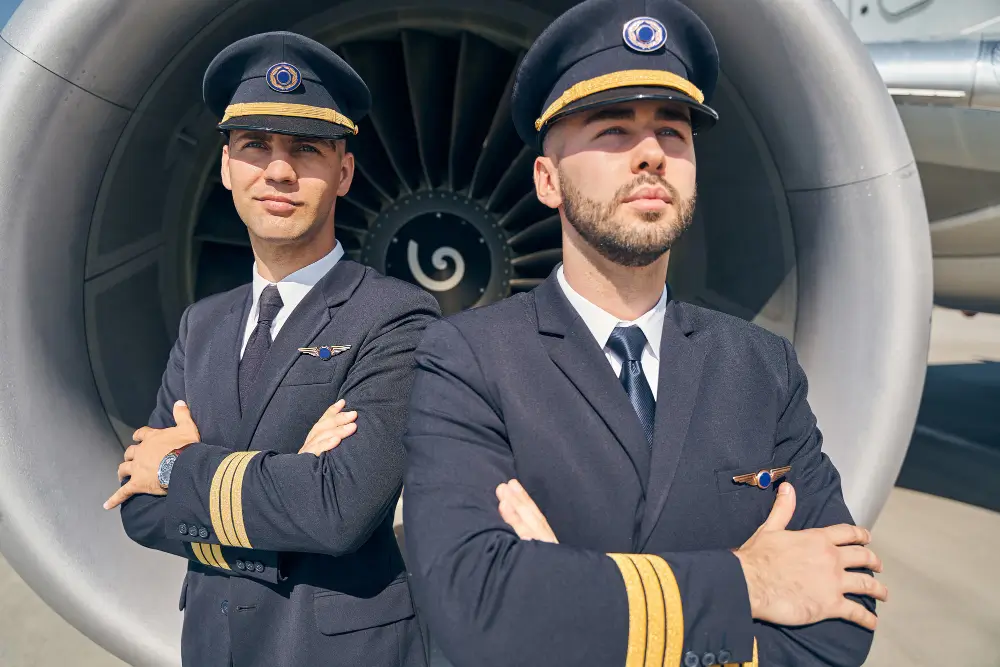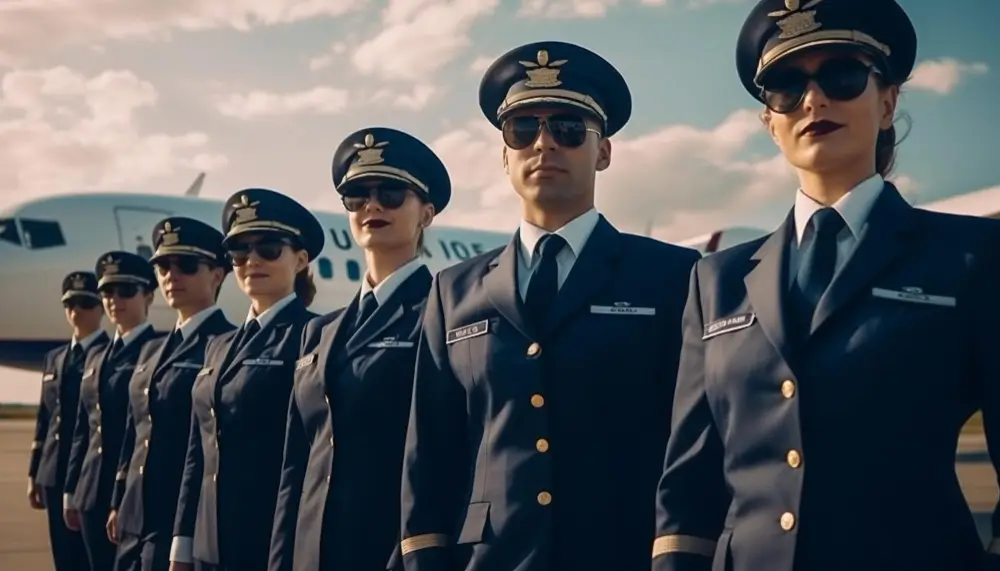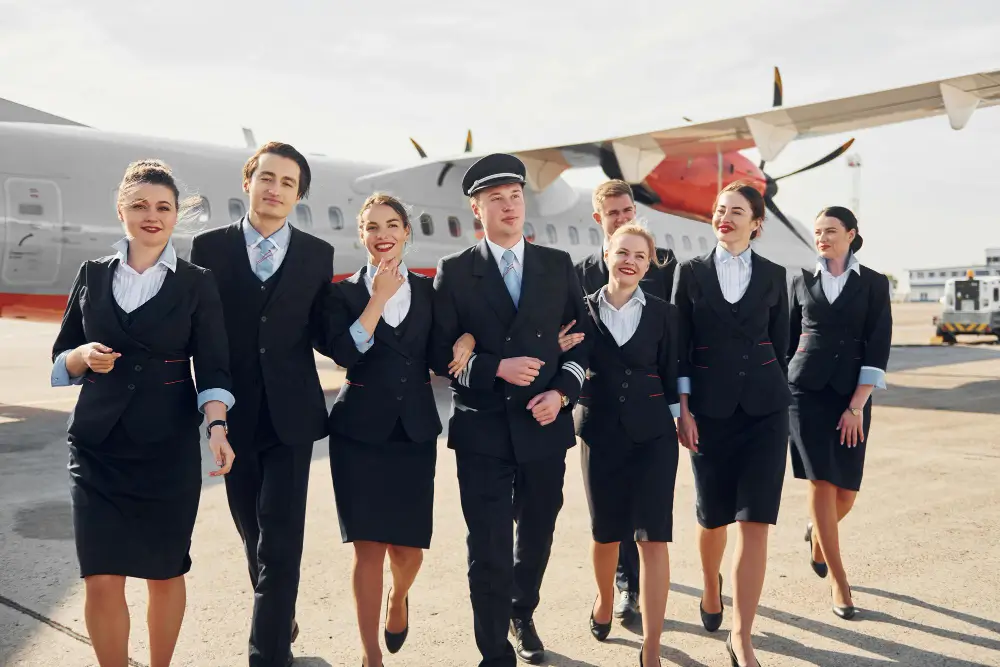In aviation, uniforms serve a purpose far beyond aesthetics. Worn by pilots, flight attendants, ground staff, and maintenance teams, aviation uniforms are essential for ensuring:
- Safety and protection in high-risk environments
- Comfort during long shifts across diverse conditions
- Practical features tailored to specific roles
- Professional branding and passenger confidence
Here’s a deeper look at how functionality leads the design of aviation uniforms.
1. Safety: A Non-Negotiable Priority

Aviation professionals face numerous hazards both in the air and on the ground. Uniforms are designed to provide vital protection through
- Flame-resistant fabrics for pilots and cabin crew
- High-visibility gear for ground staff in busy airports
- Anti-static materials for maintenance workers
- Compliance with FAA, EASA, and other global safety standards
These features are critical in minimizing injuries and ensuring crew readiness during emergencies.
2. Comfort: Built for Long Hours and High Performance
Aviation roles often involve extended shifts, making comfort a key priority. Modern aviation uniforms feature:
- Moisture-wicking, breathable fabrics for climate adaptability
- Flexible and stretchy materials for unrestricted movement
- Ergonomic touches like reinforced knees and adjustable fits
- Supportive footwear tailored to different roles
- Pilots need cushioned shoes for long flights
- Cabin and ground staff benefit from slip-resistant, fatigue-reducing footwear
- Pilots need cushioned shoes for long flights
Comfortable uniforms improve performance and reduce fatigue, an essential aspect of operational safety.
3. Practicality: Tailored for Real-World Duties

Functionality in aviation uniforms supports efficiency and job-specific needs. These include:
- Rank insignia, like epaulettes for pilots
- Strategic pockets in crew attire for storing essential tools
- Heavy-duty, easy-to-clean materials for ground crew uniforms
- Layering options (e.g., thermal undershirts or jackets) for varying climates
These practical additions ensure crew members are always prepared, no matter the environment.
4. Branding: A Uniform Look for a Trusted Image

Uniforms contribute significantly to an airline’s visual identity and customer perception.
- Coordinated colors, logos, and design elements reflect brand values
- A professional appearance instills trust and loyalty in passengers
- Premium features like tailored fits and luxury fabrics enhance VIP airline brands
In short, well-designed uniforms align crew presentation with brand messaging and service expectations.
5. Innovation: The Future of Aviation Uniforms
As the industry evolves, uniforms are advancing through technology and sustainability:
- Antimicrobial fabrics for hygiene and freshness
- Smart textiles with sensors to monitor temperature or stress
- Eco-conscious materials like organic cotton and recycled polyester
- Personalized fits for inclusivity and comfort across diverse body types
Innovation ensures aviation uniforms remain relevant, efficient, and environmentally responsible.
6. Longevity: Designed to Withstand the Demands
Aviation uniforms undergo heavy wear. To maximize durability, they are crafted with:
- High-quality, resilient materials for long-term use
- Professional maintenance programs, including routine laundering and care
- Clear care instructions to preserve fit and appearance
Properly maintained uniforms reduce replacement costs and maintain a polished, consistent image.
Conclusion: Attirecorp Delivers More Than Style
At Attirecorp, aviation uniforms are engineered to meet the industry’s exacting demands. Through a combination of:
- Superior materials
- Ergonomic designs
- Custom-fit innovation
- Sustainable practices
Attirecorp ensures every aviation professional can perform their role with confidence, safety, and style. Whether for pilots, crew, or ground staff, our uniforms strike the perfect balance between form and function, making a lasting impression while supporting operational excellence.

